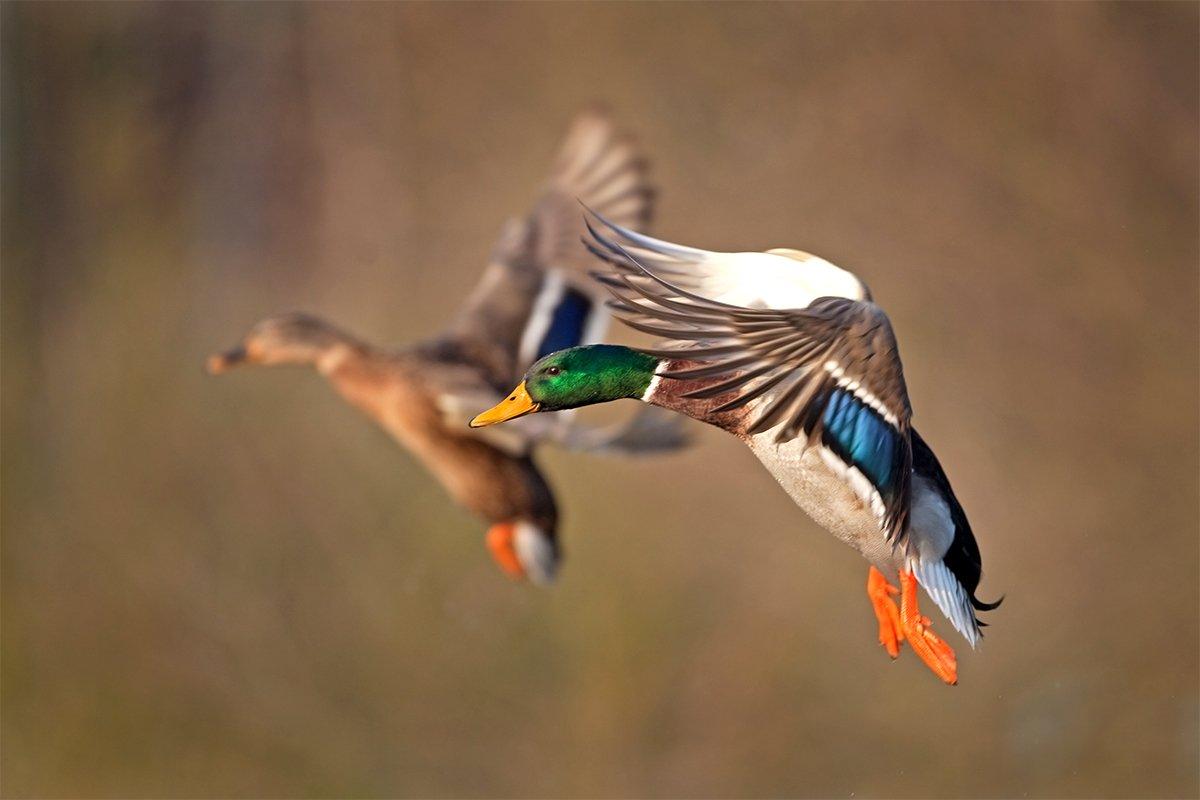Greenheads (and Suzies) Appeal to Us in Many Ways
Anas platyrhynchos is the world's most common and widespread wild duck; even a frequent resident of parks, golf courses and city ponds.
Yet when we sit by the fire and talk of fowling and hunts past, it becomes clear that we cherish and revere the mallard over all other ducks and geese. Many inveterate timber or field hunters pursue it almost exclusively, claiming that a duck without a green head really isn't a duck. And even die-hard diver or goose hunters pause to appreciate the heft and beauty of a fully colored greenhead.
This is no surprise. Mallards deserve our awe and attention. Here are seven reasons why.
Great Late or Early
Because of their abundance and wide range, mallards can provide great hunting opportunities from opening day through the entire season in many areas. In the North and Midwest, hunters pursue locally raised mallards beginning in late September and continue chasing migrants into early December. Even in Arkansas and other Mid-South states, the first winds of winter often bring an early flight of mallards into the timber or rice fields by opening day. Mallards are a duck for all seasons.
Calling
Remember all the calling practice you've huffed and puffed your way through? You did it for mallards. Yeah, I know other ducks react favorably to mallard vocalizations, and the sounds of other ducks — wigeon whistles, bluewing quacks, diver burrs or pintail whistles — work well in many situations. However, you quack, chuckle and highball to gain the attention of those wary greenheads. And when calling works and mallards float above your hole, it's a great feeling.
Challenge
No one ever called mallards gullible or stupid. They're wary and adaptable, and they don't get fooled twice. Sharp-eyed and ever skeptical, they shy away from suspicious lumps, shiny objects, phony-looking spreads or even potentially dangerous situations. Ever see a flock circle forever over a pothole hundreds of yards from hunters? Those are tough birds, man. That's why it's so challenging and rewarding to consistently find, decoy and kill mallards — especially mallards on publically accessible water. In fact, it might mark the zenith of waterfowling accomplishments.
Wet or Dry
Pick your locale: huge reservoirs or a chopped corn field; small potholes or a swath of freshly cut oats. You can hunt mallards almost anywhere and with dozens of methods. Chase them in the timber or in an open-water layout boat. Jump them from a tiny stream, or hoof a mile into a prairie walk-in property to a flooded pasture. Mallards frequent various areas up and down the flyways. Choose your favorite method, and get after them.
Speed
Maybe we don't rank the mallard's aerial abilities with those of ringnecks or greenwings, but the big birds are fast and agile. Don't think so? Watch how a startled greenhead pumps his wings, catches the wind and disappears in a flash when you rise to shoot. Marvel at the straight-line speed of a drake as he escapes gunfire at a pressured marsh opening day. And appreciate the explosion and Houdini-like escape of a mallard flushing from a stream bend.
Mallards can move. And if your gun mount or lead are a split-second too slow, they'll zip right out of your life.
Eye Appeal
I think all ducks are beautiful — even the drab camouflaged feathers of a hen gaddie. But the spectacle of a full-plumage drake mallard in breeding attire is something special. From its iridescent greenhead through its chestnut breast, brilliant speculum and glowing orange feet, the mallard represents a taxidermist's dream. You almost hate to waste any of those beautiful feathers. However, that would prevent you from experiencing reason No. 7.
Tops on the Table
Mallards might be the best-tasting duck. Some people love wood ducks, and others (including me) often side with King Can. Still, I don't know anyone who would omit the mallard from his list of the top two or three culinary delights in waterfowl hunting. Grill the breasts medium-rare over a hot fire. Slow-roast a plucked late-season drake. Or sear the skin crisp on a halved bird. Mallards never disappoint.
No. 1
As mentioned, I enjoy chasing all ducks, but this talk of greenheads has me hankering for a prairie grain field or iced-lined Midwestern stream. Bring on the mallards, please.
Click here for more Realtree waterfowl hunting content. And check us out on Facebook.







